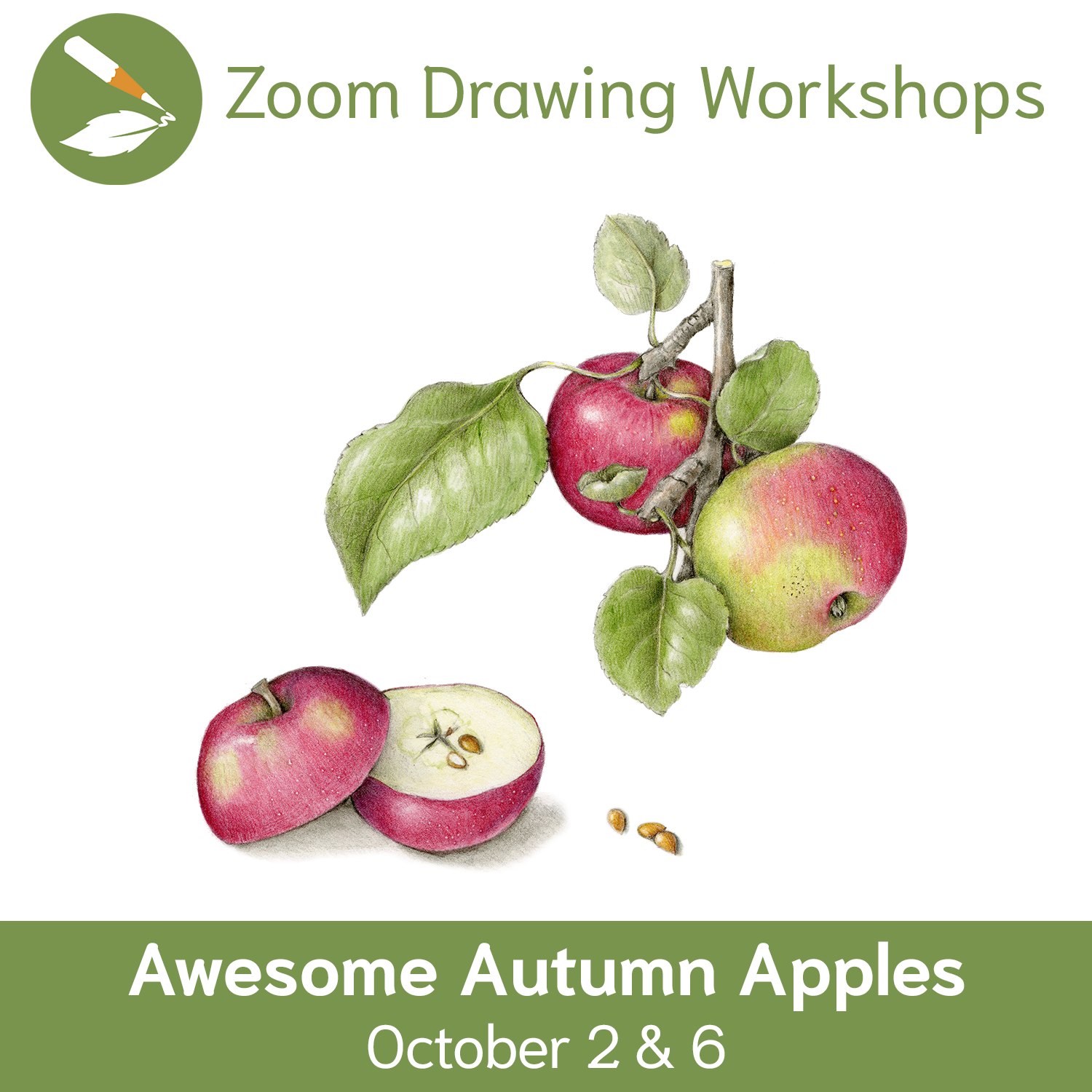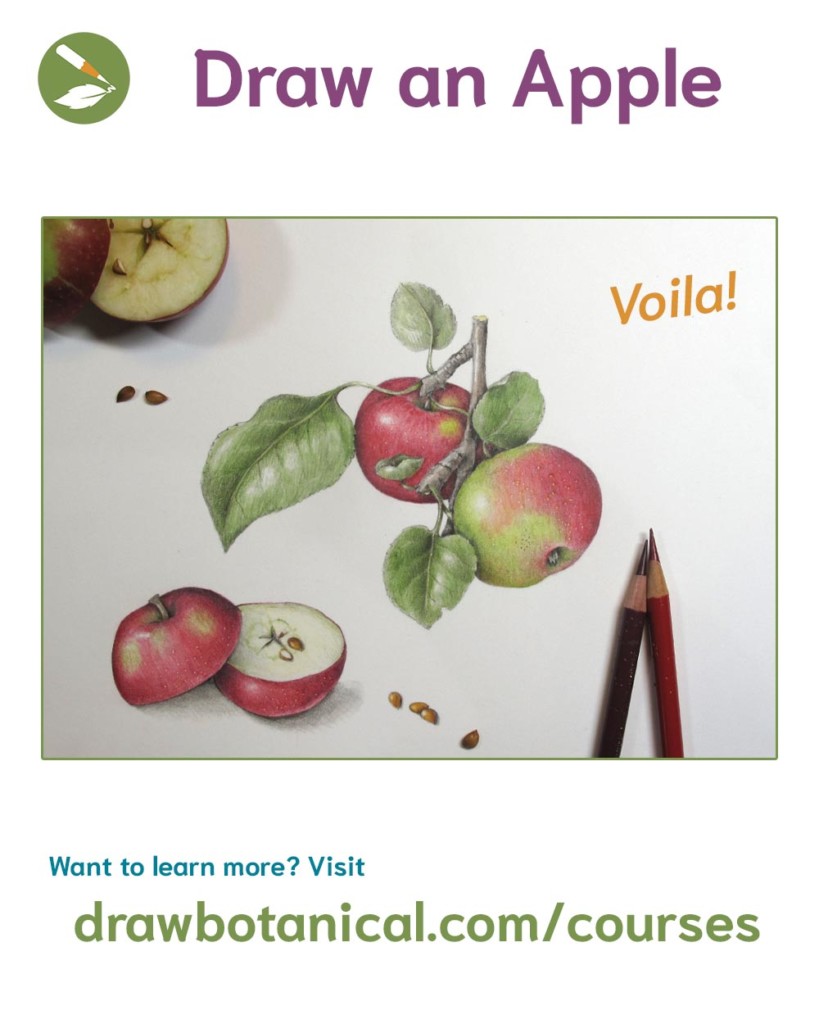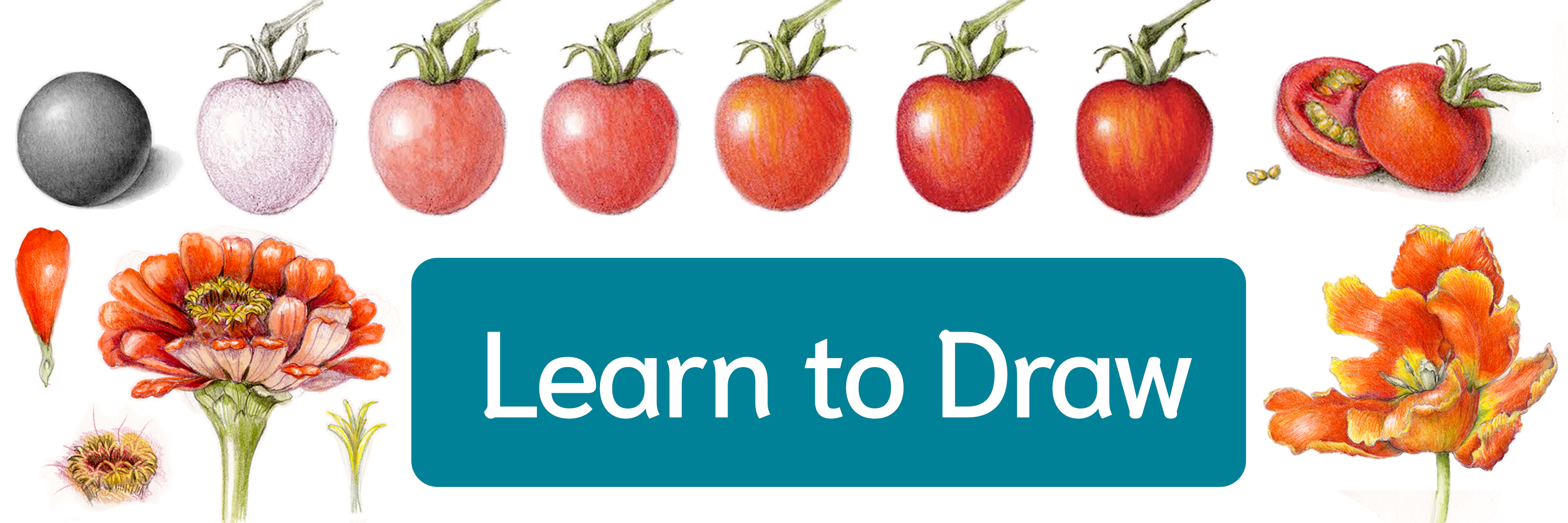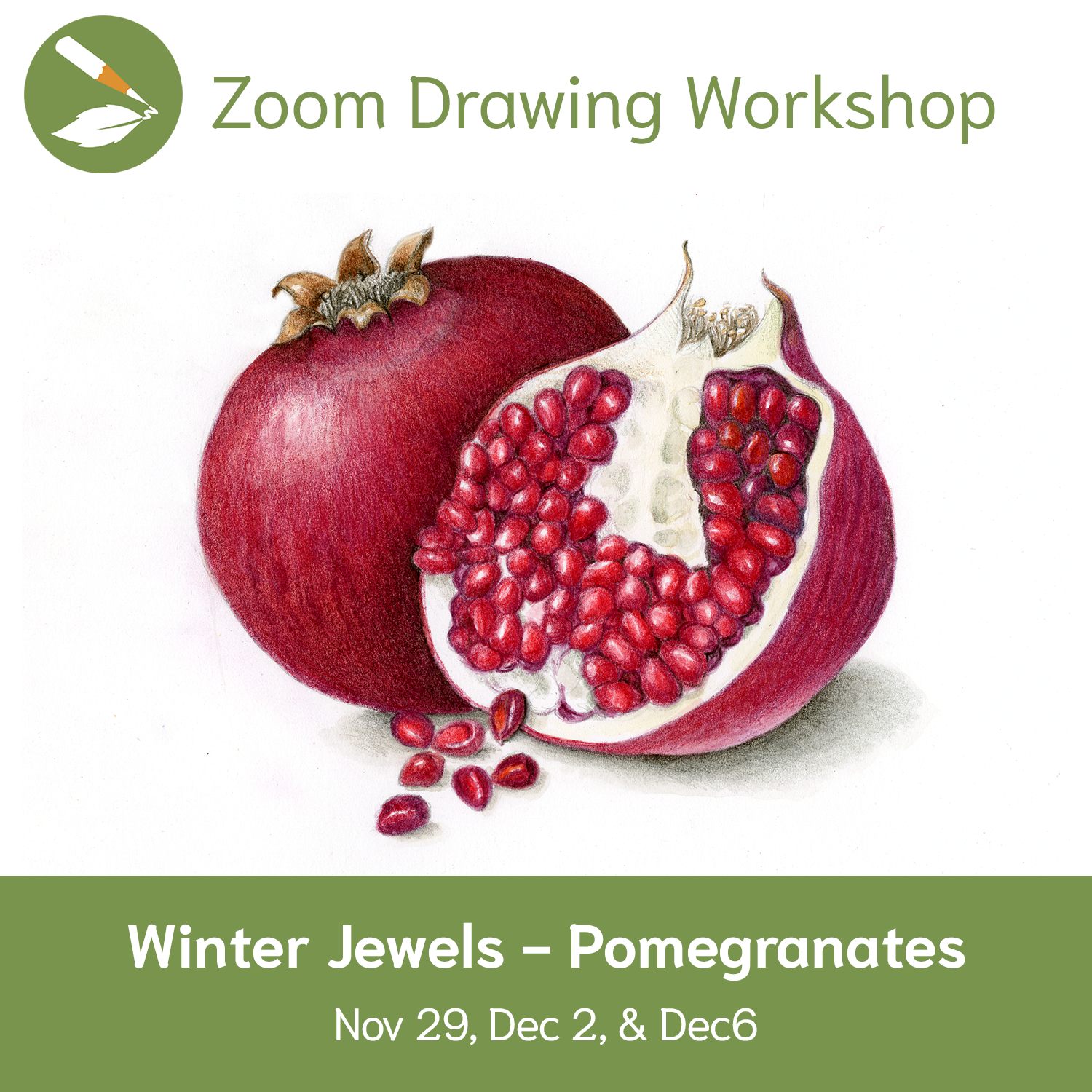
Apples are as satisfying to draw as they are to eat!
Curl up with your hot mug of apple cider, and create an apple portrait to warm your heart year-round! Learn techniques combining colored pencil and watercolor to render a realistic fruit (that will make a delightful snack when you’re done!).
Practice creating beautiful patterns while maintaining 3D form. Work on a single fruit, and/or lay out a more complex composition with stem, leaves, and cut fruit. If you can, try to source a fruit with stem and leaves attached (but it’s also totally fine to pick up any fresh apple from your local market).
Watch the Workshop Recording of Awesome Autumn Apples
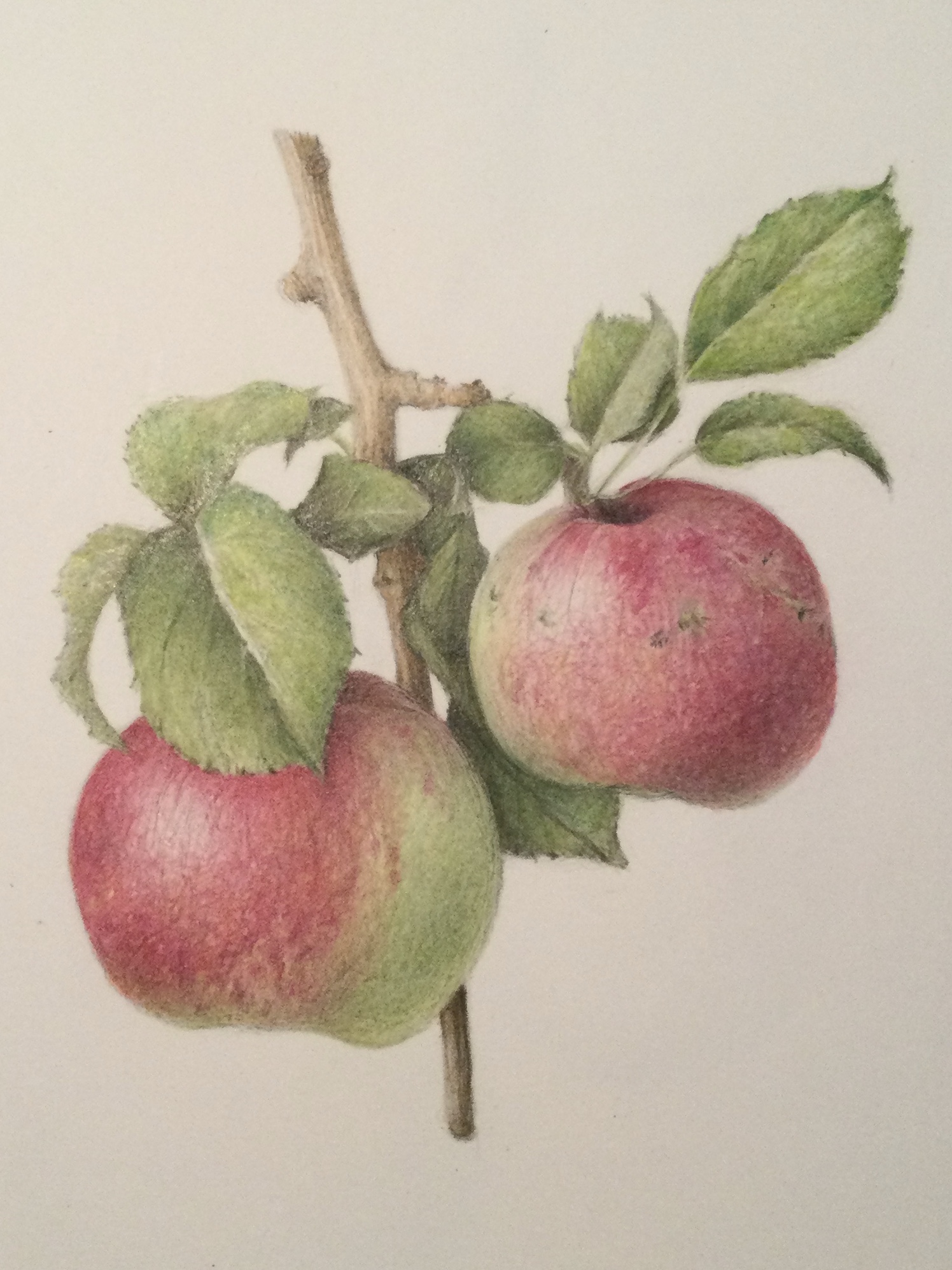
“Had a great time at the workshop at Wendy’s farm!!! It was so good to see old friends and meet an amazing group of artists and their equally amazing artwork!!!” –Doug Milne, Draw Botanical Instructor
I love to pick my subject fresh from the tree because it gives me the chance to connect with the plant and its habitat. Experiencing the intimate parts of the plant help me to plan interesting and informative compositions that can tell a “story” about a particular plant. Seeing how our subjects grow not only helps us understand their forms, but also reminds us how all of nature is connected; we all need sun, water, and nurturing.
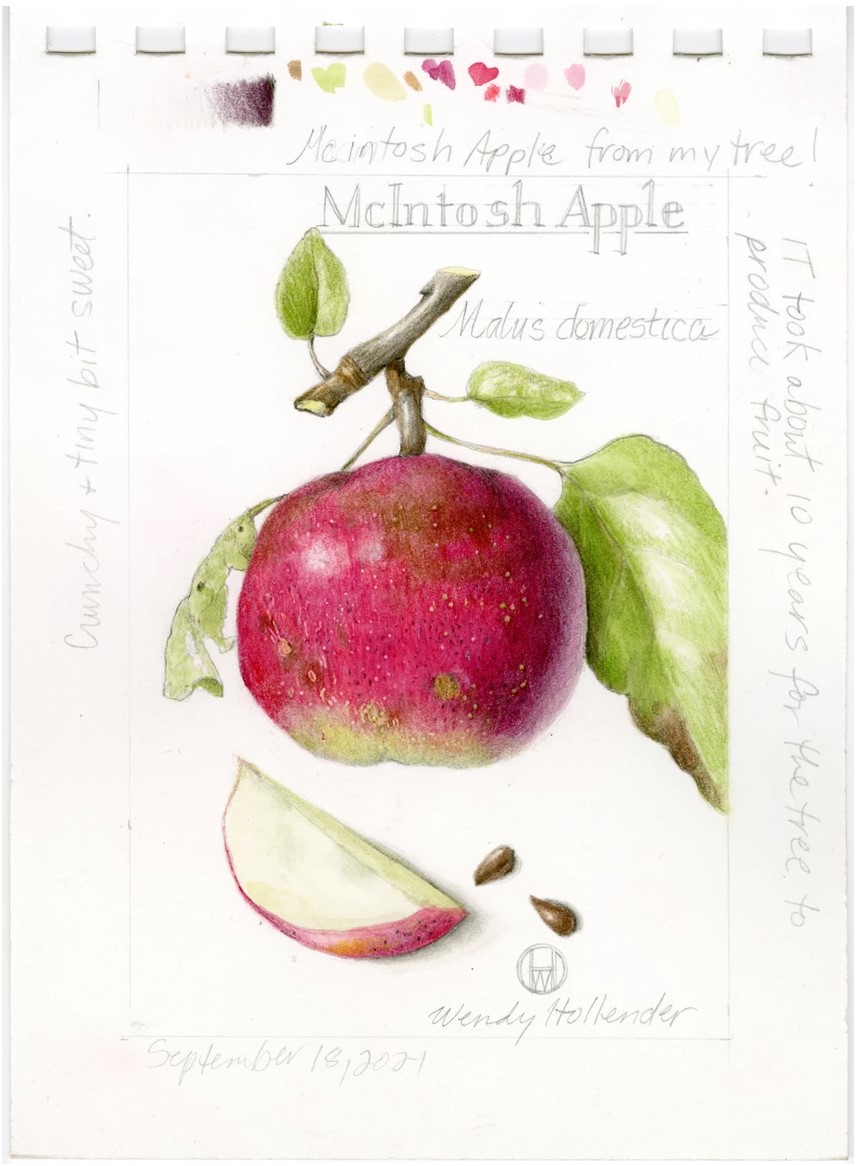
Use this step-by-step outline as a guide to draw an apple, but don’t be afraid to do things differently! We encourage you to experiment with what works for you and the live subject you choose to draw.
(Remember that though this lesson from The Practice of Botanical Drawing course specifies techniques for apples, the fundamental skills can be applied to any subject and are designed to be visited again and again.)
0: Every drawing starts with setting yourself up for success!
This includes pruning your subject, considering perspective, setting up your light source, and positioning yourself at your drawing table. (Find more free tips in the courses category of our blog)
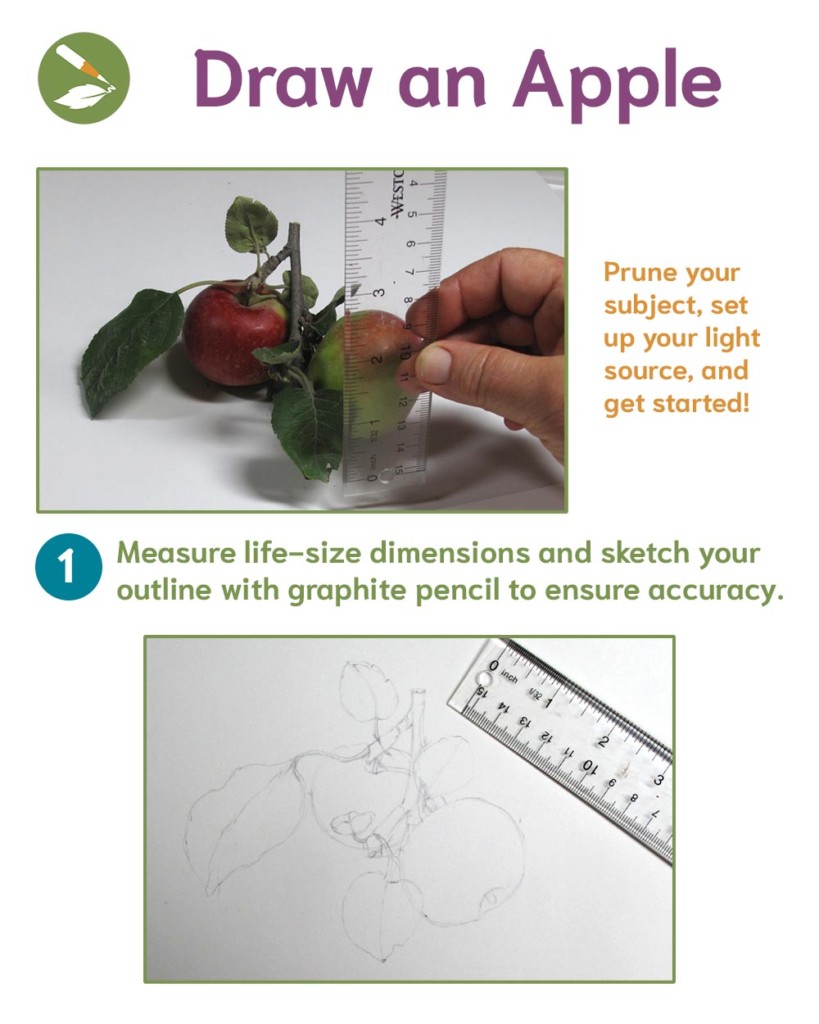
1: Measure
First, listen… with your eyes. Measure life-size dimensions and sketch your outline with graphite pencil to ensure accuracy. (Helpful tips for accurate measuring here.)

2: Tone
Ignore color at first, and use a neutral color like Dark Sepia to tone overlaps and communicate 3D form.
3: Watercolor
Now, begin to pay attention to the color of the apple skin. Starting with a watercolor wash instantly breathes life into your drawing. Remember to stay true to form and leave a white spot for your highlight!
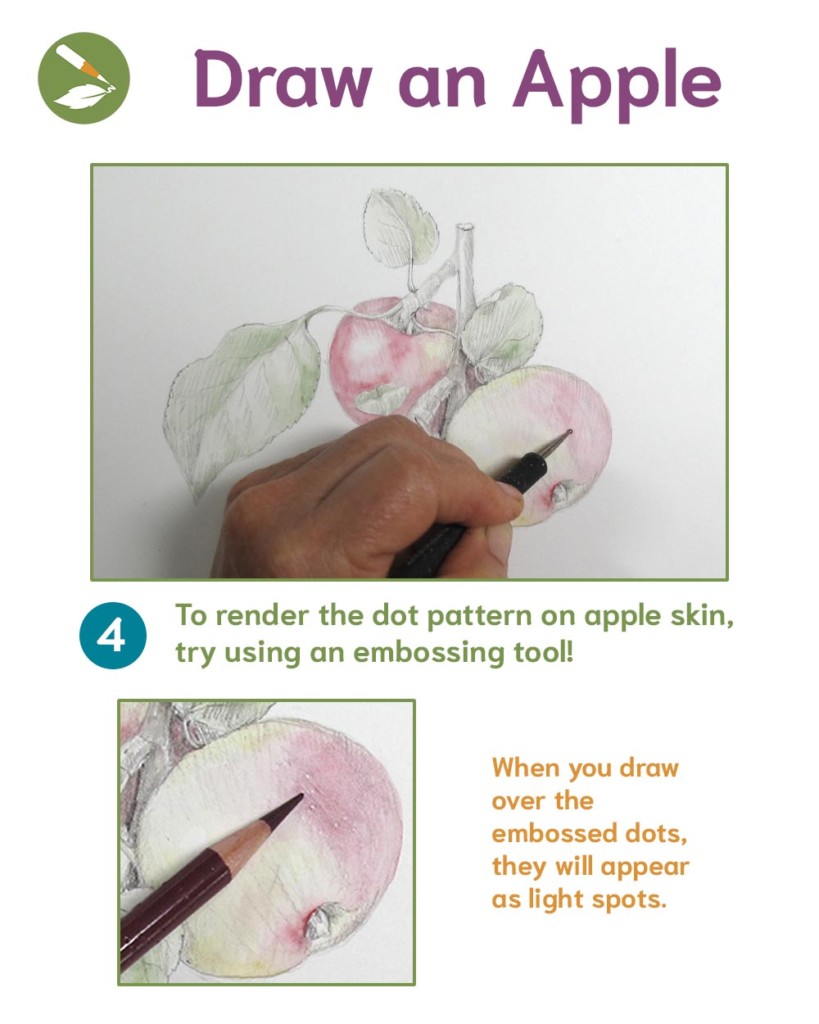
4: Embossing (Optional)
To render the dot pattern we see on apple skin, try using an embossing tool! When you draw over the embossed dots, they will appear as light dots.
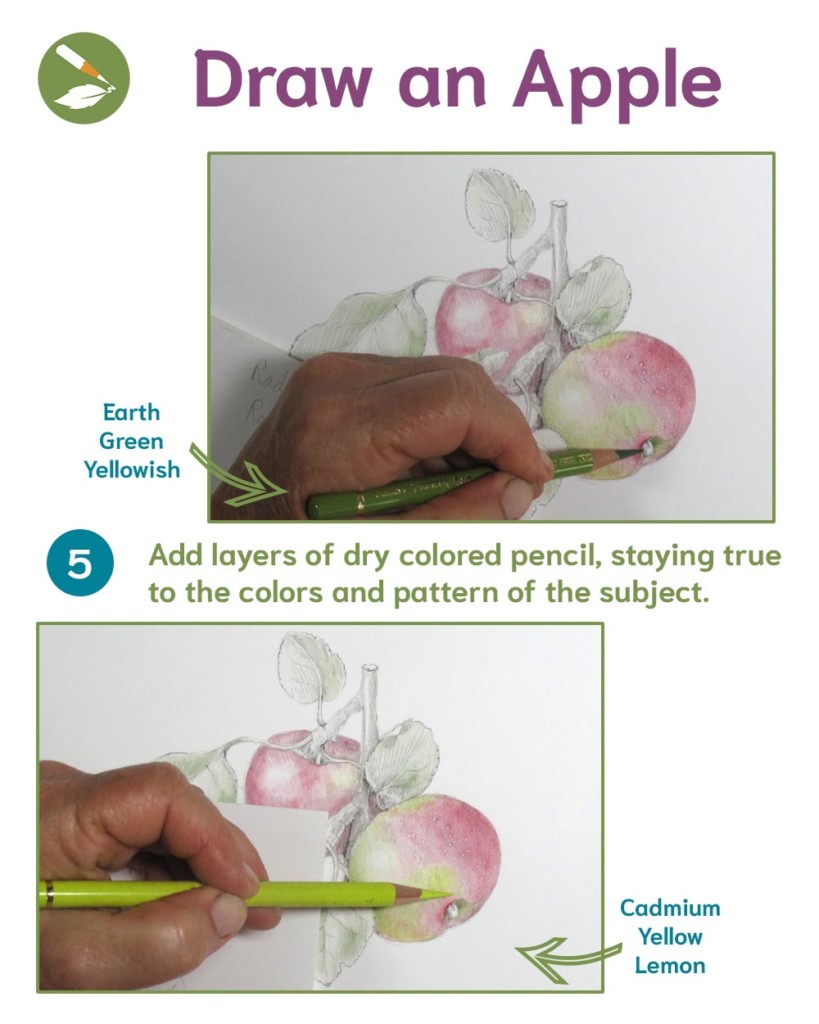
5: Layer Colored Pencil
Add layers of dry colored pencil, staying true to the colors and pattern of the subject.
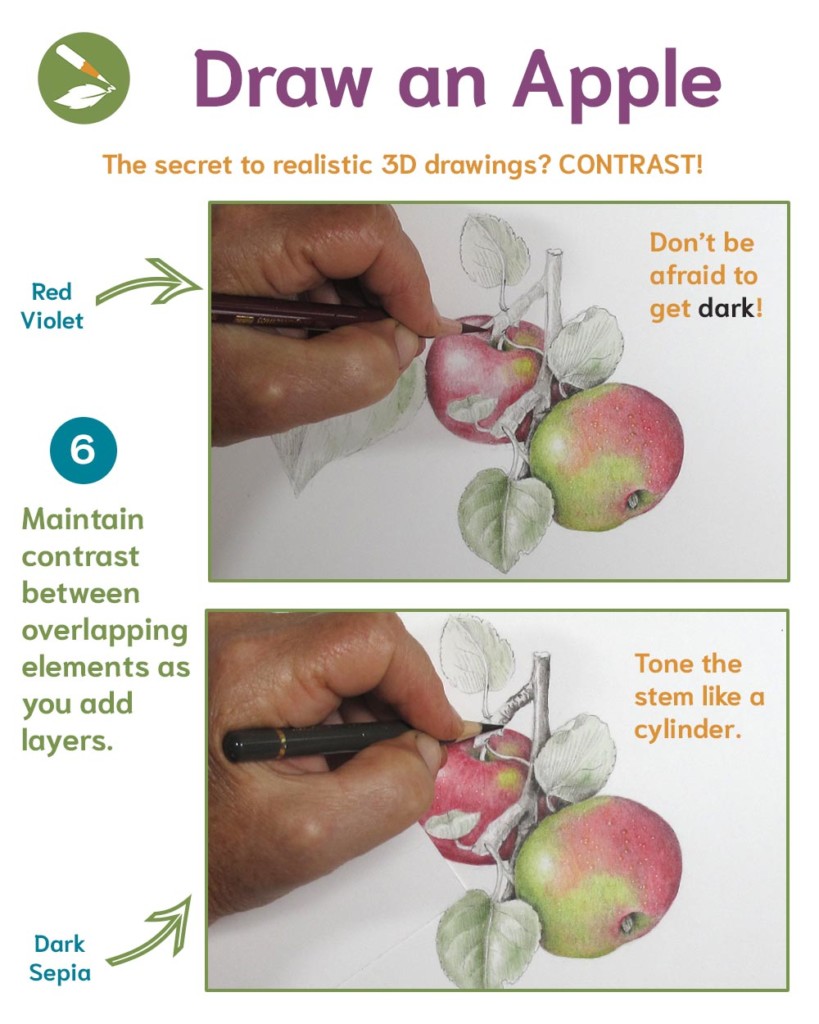 6: Contrast
6: Contrast
Maintain contrast between overlapping elements as you add layers. This may mean adding more dark colors (like Red Violet and Dark Sepia) on top of your colors to keep the form looking three-dimensional.
Tip: Tone the stem like a cylinder!
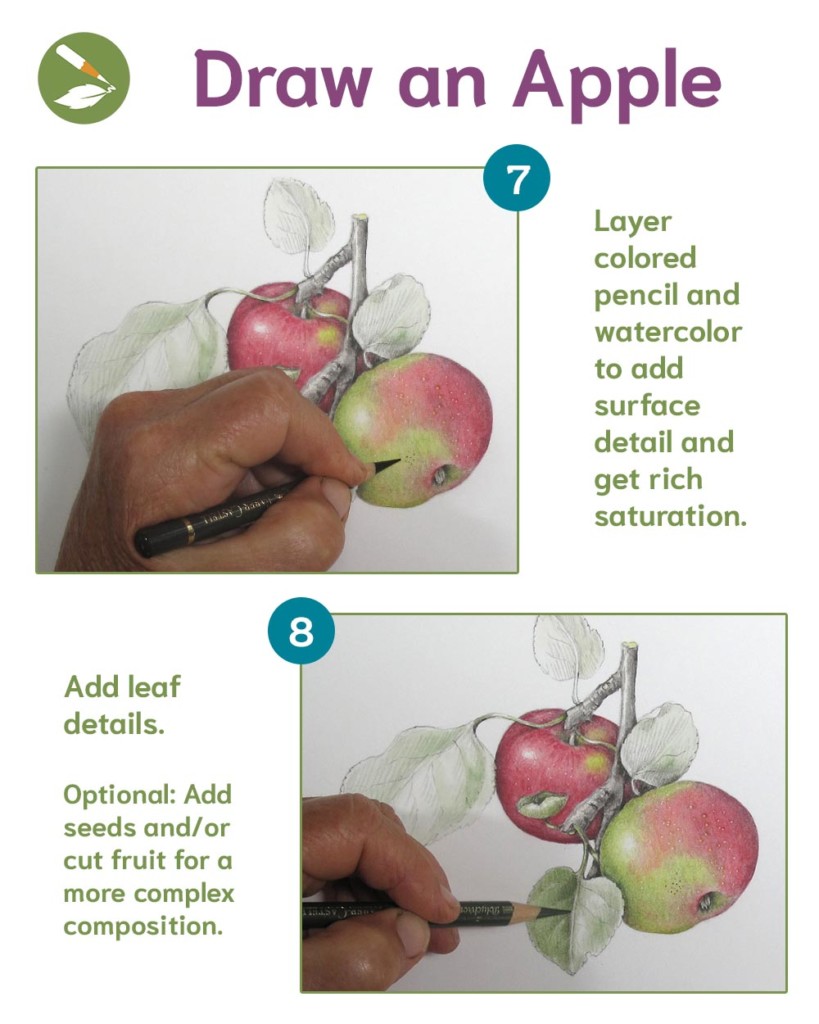
7: Saturation
Layer colored pencil and watercolor to add surface detail and get rich saturation.
8: Details (Optional)
Add leaf details. (Learn tips on drawing leaves here or click here to draw a leaf in 9 steps.)
Adding seeds, cut fruit, or other stages in a plant’s life cycle to your drawing can create interesting compositions (if you’re looking for an additional challenge ;)).
Most importantly, your creations should come from a place of JOY.
Rekindle your sense of curiosity and wonder by practicing your beginners’ mind! Find more helpful motivation here.
Want to learn more?
Try your FIRST WEEK FREE and cancel any time with no hidden fees!
